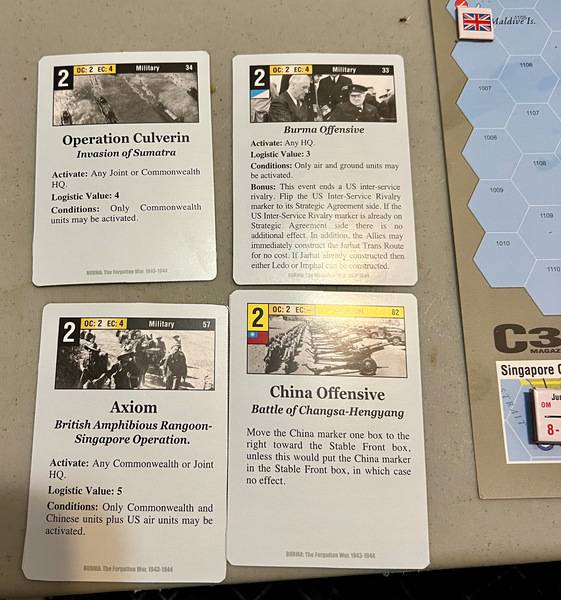Back in July, I posted here on my first thoughts about Mark Herman's much discussed ACW game, Rebel Fury, published earlier this year by GMT. It's a fairly simple, divisional level game that covers six battles: Fredericksburg, Chancellorsville, Chickamauga, Chattanooga, The Wilderness and Spotsylvania. The mechanics are very similar to Dan Fournie's ancients game, Baetis Campaign, published in C3i magazine earlier this year and reviewed here.
Chancellorsville (henceforth referred to as Cville) uses the same map as the solo introductory game, Fredericksburg, which frankly was not a lot of fun. Cville promises more sport for the Union as half the federal forces begin on the south side of the map, at Fredericksburg, under Sedgewick, while the other half enter from the north map edge under Hooker. The Union has the initiative for two turns, as per the game's Turning Movement rules, but after that the Confederates inevitably get to move first because of their superior generals, Lee and Jackson.
Playing solo, I found it posed an interesting challenge for the rebs: how many divisions should I pull out of the entrenchments across the Rappahannock from Fredericksburg to send north to try and stop Hooker? In my solo game, the answer was just enough to slow the Union forces on either end of the map. As you can see below, the Union came close to their victory conditions, establishing a road route from south to north that is entirely more than two hexes removed form any Confederate unit, while likewise clearing the rail line south from Fredericksburg from Confederate influence. I got close, but not close enough.
However, if you look at the little red cross "Casualty" markers in the photo below, that is history repeating itself with a vengeance, as both Jackson and Lee became casualties, or at least enough of their HQ staffs to render them hors de combat. Herman has a clever rule whereby one can use a commander's combat rating, called "battle stars", to influence a fight, but there is a good chance that the commander will become a casualty. As the Confederate player, one has to resist the temptation to use the commanders in combat roles. For the Union player, at least in this scenario, Sedgewick and Hooker have less ability to influence a combat outcome, so it's best leaving them in maneuver mode so they can enable their units to cover more ground, and for the Union, maneuver, as I learned, is the key to success.
Judging by this podcast, not everyone is sold on this system, but I like what I've played of it so far, and I would be interested to retry this scenario to see if I could manage a Union victory.








